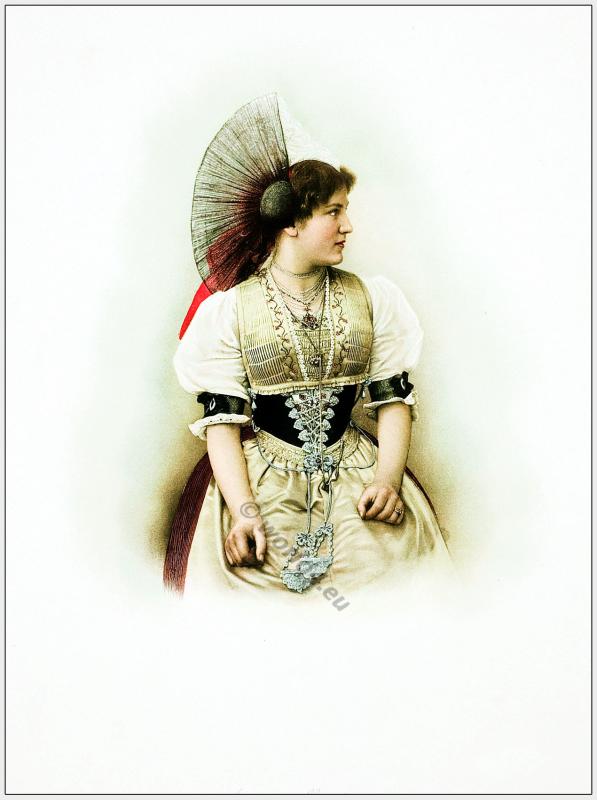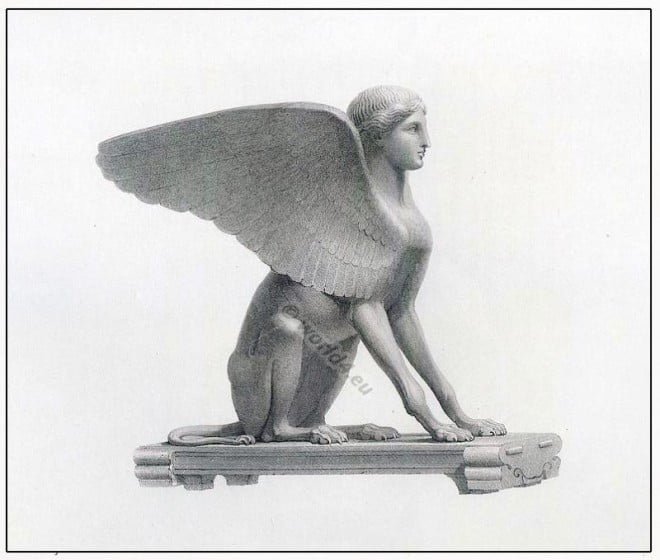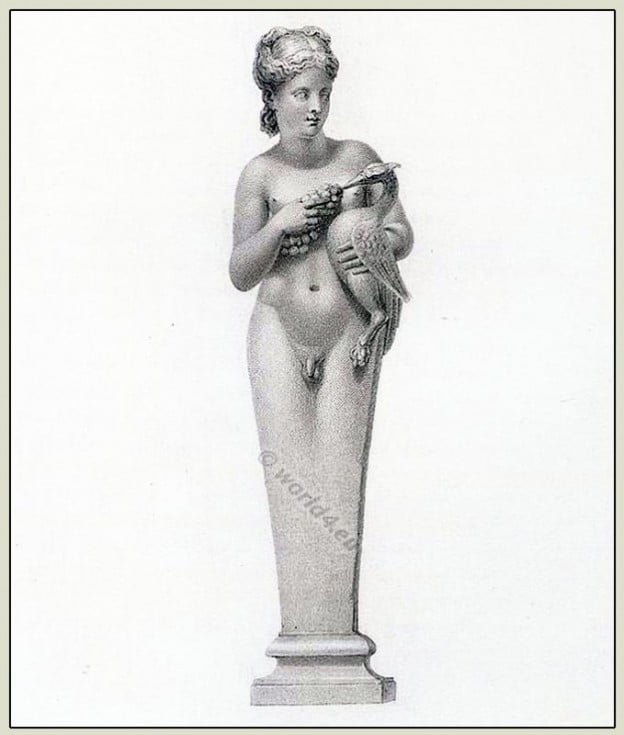Woman from Appenzell Innerrhoden.
Woman from Aargau in Freiaemter
Woman from Aargau in Freiaemter.
Woman from Bern Simmental. Swiss national costumes.
Woman from Bern Simmental. Source: The Swiss national costumes of XVII – XIX century originals. Original recordings from the Swiss costume festival. Zurich 14 March 1896. Additional galleries of Switzerland costumes:… Read More
The Sphinx, sister of Hydra, Chimera, Kerberos, and Orthos.
Ancient Greek mythology. The Sphinx was considered a demon of destruction and doom.
Hermaphroditos, the son of the god Hermes and the goddess Aphrodite.
A terminal statue of an Hermaphrodite. The human body extends downwards as low as the hips, whence it gradually assumes the form of a square pilaster diminishing in size towards the base.
Pan with a human body and the legs of a goat. Follower of Bacchus.
The scholars and writers on antiquities, up to the time of Winckelmann, apply the term Fauns to the human figures with tails and pointed ears, while they term the figures with goat’s legs sometimes Pans, at other times Satyrs.
Statue of Ceres, the Roman goddess of agriculture, fertility and marriage.
A statue of Ceres, crowned in the manner of the Egyptian Isis. This figure is clothed in a very long and ample tunic descending quite to the ground, leaving visible only the extremities of the feet; the sleeves are extremely full, falling down to the elbows, and fastened, along the upper side of the arms, only by fibulae.
Libera, or the female Bacchus in a tunic of fine material.
A statue of Liberia, or the female Bacchus, crowned with a wreath of ivy. A description of the collection of ancient Marbles in the British Museum.
Roman emperor Septimus Severus in Paludamentum and Circular Fibula.
Septimius Severus was born in Africa of Roman parents; he died at York in the year 211 a. D. after a severe illness at the age of sixty-six. This bust was found in the year 1776 on the Palatine Hill, in the part of the Palace of the Cæsars now occupied by the Villa Magnani.
Bust of a young and beardless satyr, with the pointed ears of a goat.
Bust of a young and beardless satyr, distinguished, as usual, by the pointed ears of a goat, and by hair in front shaggy and rough, like that of the same animal.










